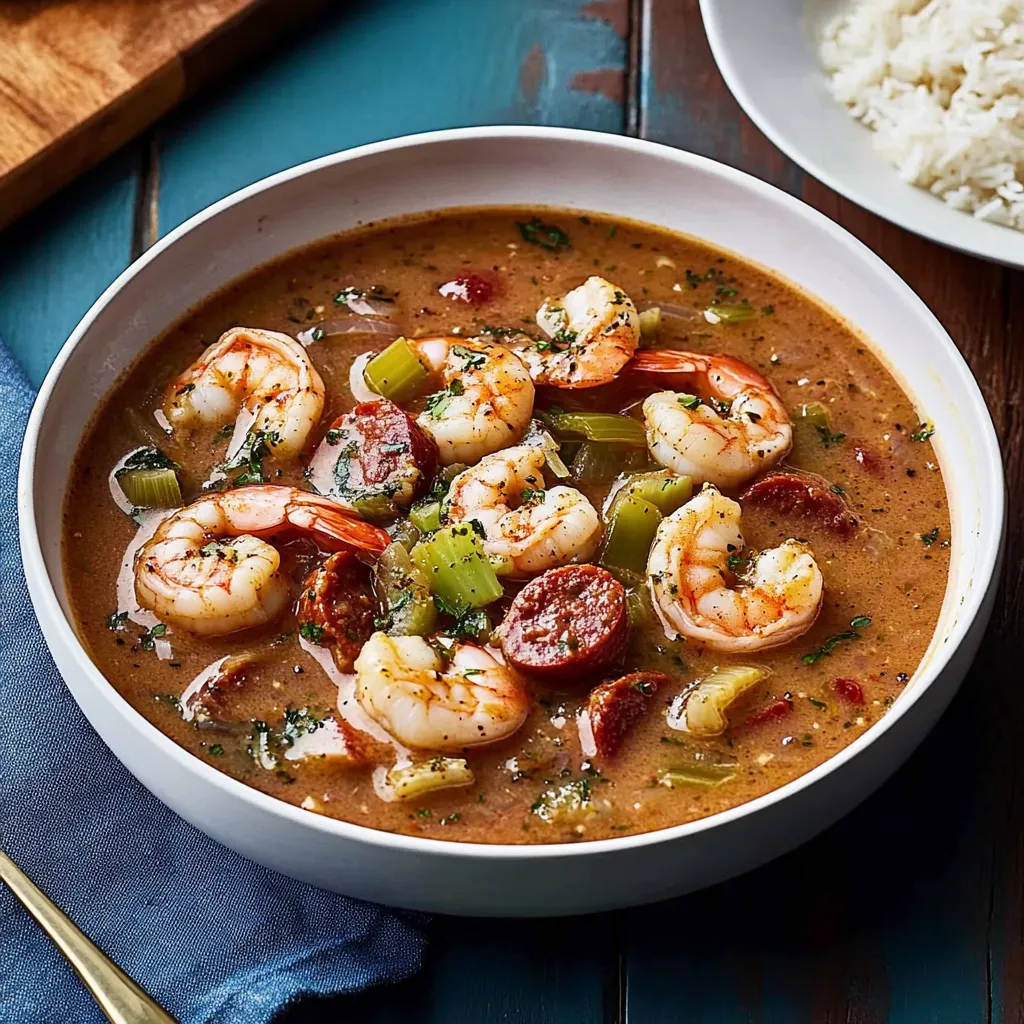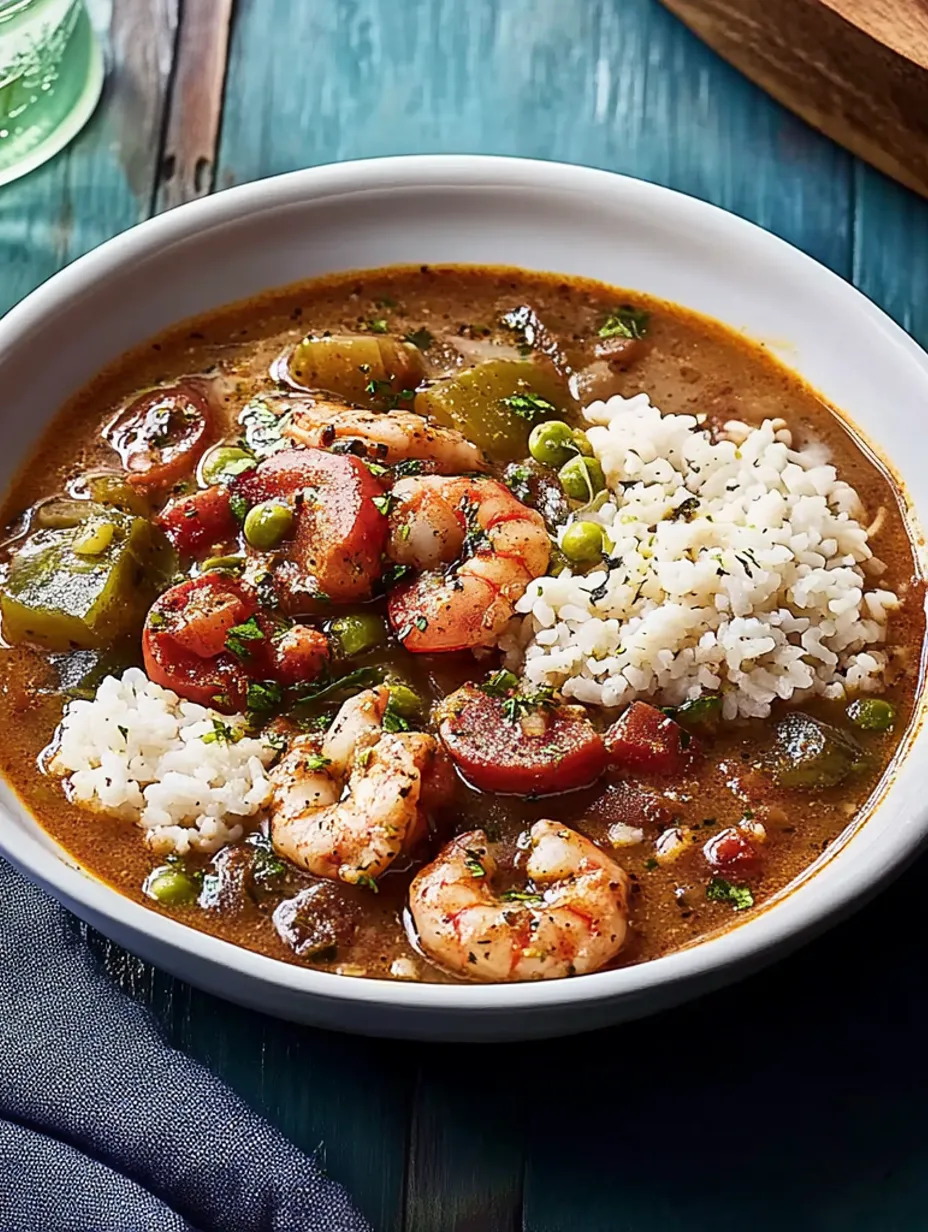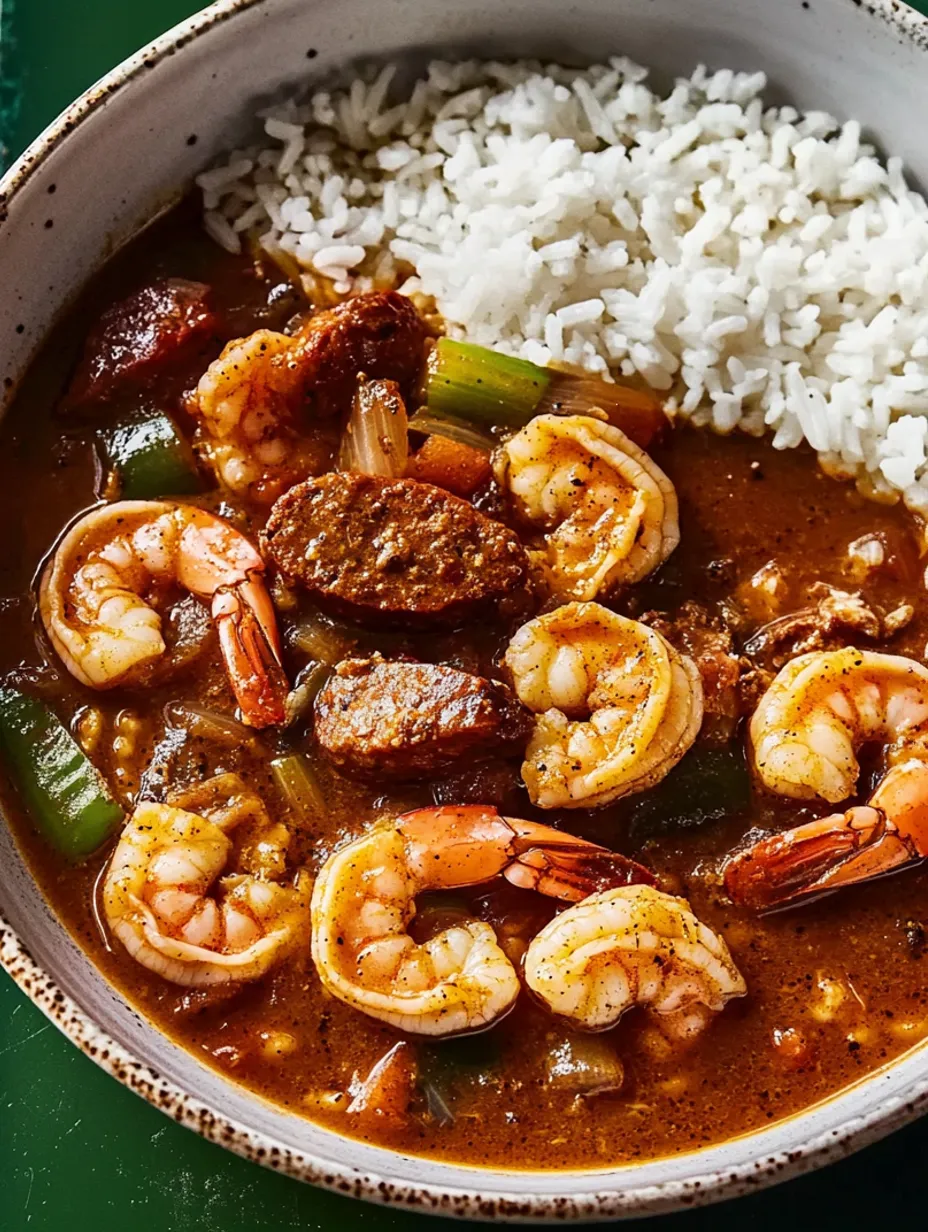 Pin it
Pin it
Cook-the-Enemy Gumbo transforms game day rivalries into deliciously satisfying sustenance, combining deep Cajun flavors with playful team spirit. This hearty one-pot wonder begins with a properly developed dark roux—the foundation of authentic gumbo—before incorporating andouille sausage, fresh vegetables, and plump shrimp for a crowd-pleasing dish that improves as it simmers.
I first made this gumbo for a tailgate when LSU was playing Florida, so naturally, I added some alligator meat to symbolically devour the competition. Whether or not it helped our team win is debatable, but the gumbo was definitely victorious—it disappeared faster than any other dish at the gathering!
Flavor-Building Ingredients
- Roux (oil and flour) creates the crucial foundation—patience here pays dividends
- Andouille sausage provides smoky, spicy depth that permeates the entire dish
- Trinity (onions, bell peppers, celery) forms the aromatic base typical of Cajun cooking
- Garlic adds pungent warmth that complements the other flavors
- Chicken stock creates the silky body of the gumbo
- Thyme and bay leaves contribute subtle herbal notes
- Cayenne offers controllable heat—adjust to your preference
- Okra thickens naturally while adding distinctive texture and flavor
- Shrimp brings sweet, delicate seafood flavor to balance the richness
 Pin it
Pin it
Gumbo-Making Method
Perfect Roux DevelopmentBegin with the critical first step: making a proper dark roux. Combine oil and flour in a heavy Dutch oven, then settle in for the most important part of gumbo-making—stirring constantly over medium-low heat until the mixture transforms from pale to the color of milk chocolate. This process can take 30 minutes to an hour, but this patience is what distinguishes great gumbo from merely good gumbo.
Flavor BuildingWhile the roux develops, brown the andouille sausage in batches to create those flavorful caramelized edges. The rendered fat from the sausage then becomes the perfect medium for sautéing the trinity of vegetables until they soften and release their aromatic compounds. A final brief cook with minced garlic completes this flavor base.
Combining ComponentsOnce your roux reaches that perfect chocolate color, carefully incorporate the vegetable mixture, blending the two bases together. Then gradually whisk in chicken stock, ensuring a smooth texture without lumps. Add your seasonings and browned andouille, bringing the mixture to a boil before reducing to a gentle simmer.
Patience Pays OffAllow your gumbo to simmer uncovered for a full hour, stirring occasionally. This time is non-negotiable—it's when all the various flavor components meld together, creating that distinctive gumbo character. The house will fill with an aroma that's practically irresistible, but resist sampling too early!
Final AdditionsAfter the hour of simmering, add frozen okra and continue cooking until it's almost tender. This vegetable not only contributes to flavor and texture but also helps thicken the gumbo naturally. Finally, stir in the raw shrimp and remove from heat, allowing the residual warmth to cook them gently to perfect tenderness.
Perfect ServingLadle this magnificent creation over hot white rice, allowing the grains to soak up the flavorful broth. The contrast between the rich gumbo and simple rice creates the perfect balance in each bite. For traditional presentation, add a sprinkle of filé powder or sliced green onions just before serving.
My grandmother from Thibodaux would always say, "A good gumbo is like a good marriage—it takes patience, attention, and improves with time." She'd make her gumbo the day before serving, insisting that an overnight rest allowed the flavors to "get better acquainted with each other." After following her method for years, I can confirm she was absolutely right.
Serving Suggestions
Serve this hearty gumbo alongside crusty French bread for sopping up every last drop of that rich broth. A simple green salad with vinaigrette provides a refreshing contrast to the complexity of the gumbo. Traditional accompaniments include Louisiana hot sauce for those who want an extra kick and a cold beer to cool the palate.
Creative Variations
Embrace the "cook-the-enemy" theme by incorporating proteins that represent your opponent's mascot. Add chicken for the Gamecocks, pulled pork for the Razorbacks, beef for the Longhorns, or even alligator meat when playing Florida. For a heartier version, include all three proteins—sausage, chicken, and seafood—for what locals call a "gumbo ya-ya."
Make-Ahead Magic
This gumbo is ideal for preparation up to two days in advance—in fact, it's better that way! Simply reheat gently before serving. For game day convenience, transfer to a slow cooker set on low to keep warm throughout your tailgate or viewing party. If preparing ahead, consider adding the shrimp just before serving for the freshest texture.
 Pin it
Pin it
Gumbo Wisdom
- Use a wooden spoon with a flat edge to ensure you can properly scrape the bottom of the pot while making roux
- The roux should never smoke—if it does, it's burned and there's no saving it
- For transportation to tailgates, cool completely before transferring to secure containers
When my team made it to the championship game, I prepared an epic version of this gumbo incorporating symbolic ingredients from every team we'd defeated along the way—a culinary victory lap that became as memorable as the season itself. Whether your team wins or loses, this gumbo ensures that at least your taste buds will experience triumph!
Frequently Asked Questions
- → What makes a gumbo 'Cajun' versus 'Creole'?
- Cajun gumbo, like this recipe, uses a dark roux and typically doesn't include tomatoes. Creole gumbo usually has a lighter roux, includes tomatoes, and is more common in New Orleans. Both styles use the 'holy trinity' of vegetables (onion, celery, bell pepper).
- → How important is the color of the roux?
- The color of your roux is crucial to authentic gumbo flavor. A milk chocolate-colored roux provides rich, nutty flavors that form the foundation of the dish. Patience is key - rushing this step can result in a burned roux or insufficient flavor development.
- → Can I make this gumbo in advance?
- Absolutely! Gumbo actually improves with time as the flavors meld. Make it a day ahead and refrigerate, then reheat gently before serving. For tailgating, keep it warm in a slow cooker set to low.
- → What if I don't like okra?
- While okra is traditional in gumbo, you can omit it. To maintain the thickening properties that okra provides, add 1-2 teaspoons of filé powder (ground sassafras leaves) after removing the pot from heat in the final step.
- → Can I freeze leftover gumbo?
- Yes, gumbo freezes well. Cool completely, then freeze in airtight containers for up to 3 months. Thaw overnight in the refrigerator and reheat gently on the stovetop. The texture of the shrimp might change slightly, but the flavor will still be delicious.
- → What's the best rice to serve with gumbo?
- Long-grain white rice is the traditional choice for serving with gumbo. For best results, cook the rice separately rather than in the gumbo itself, allowing everyone to add their preferred amount.
